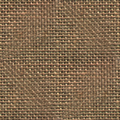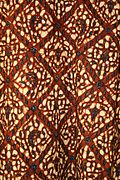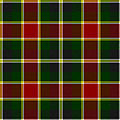Pile — may refer to:*Pile foundation, type of deep foundation *Pile (textile), fabric with raised surface made of upright loops or strands of yarn ** Carpet pile * Nuclear pile, early term for a nuclear reactor, typically one constructed of graphite *… … Wikipedia
Pile weave — is a form of textile created by weaving. Pile fabrics used to be made on traditional hand weaving machines. The warp ends that are used for the formation of the pile are woven over metal rods or wires that are inserted in the shed (gap caused by… … Wikipedia
textile — /teks tuyl, til/, n. 1. any cloth or goods produced by weaving, knitting, or felting. 2. a material, as a fiber or yarn, used in or suitable for weaving: Glass can be used as a textile. adj. 3. woven or capable of being woven: textile fabrics. 4 … Universalium
Textile manufacturing terminology — The manufacture of textiles is one of the oldest of human technologies. In order to make textiles, the first requirement is a source of fibre from which a yarn can be made, primarily by spinning. (Both fibre and fiber are used in this article.)… … Wikipedia
Textile — For other uses, see Textile (disambiguation). Fabric redirects here. For other uses, see Fabric (disambiguation). Sunday textile market on the sidewalks of Karachi, Pakistan … Wikipedia
Textile industry — The Textile industry (also known in the United Kingdom and Australia as the Rag Trade) is a term used for industries primarily concerned with the design or manufacture of clothing as well as the distribution and use of textiles.Cottage stagePrior … Wikipedia
Glossary of textile manufacturing — For terms specifically related to sewing, see Glossary of sewing terms. For terms specifically related to dyeing, see Glossary of dyeing terms. The manufacture of textiles is one of the oldest of human technologies. To make textiles, the first… … Wikipedia
Nap (textile) — For other uses, see Nap (disambiguation). A cloth with a nap. Primarily, nap is the raised (fuzzy) surface on certain kinds of cloth, such as velvet. Nap can refer additionally to other surfaces that look like the surface of a napped cloth, such… … Wikipedia
Conductive textile — A conductive textile is a fabric which can conduct electricity. Conductive textiles can be made with metal strands woven into the construction of the textile. There is also an interest in semiconducting textiles, made by impregnating normal… … Wikipedia
Net (textile) — This article is about the fabric called net or netting. For other meanings of net, see Net (disambiguation). Net or netting is any textile in which the warp and weft yarns are looped or knotted at their intersections, resulting in a fabric with… … Wikipedia



